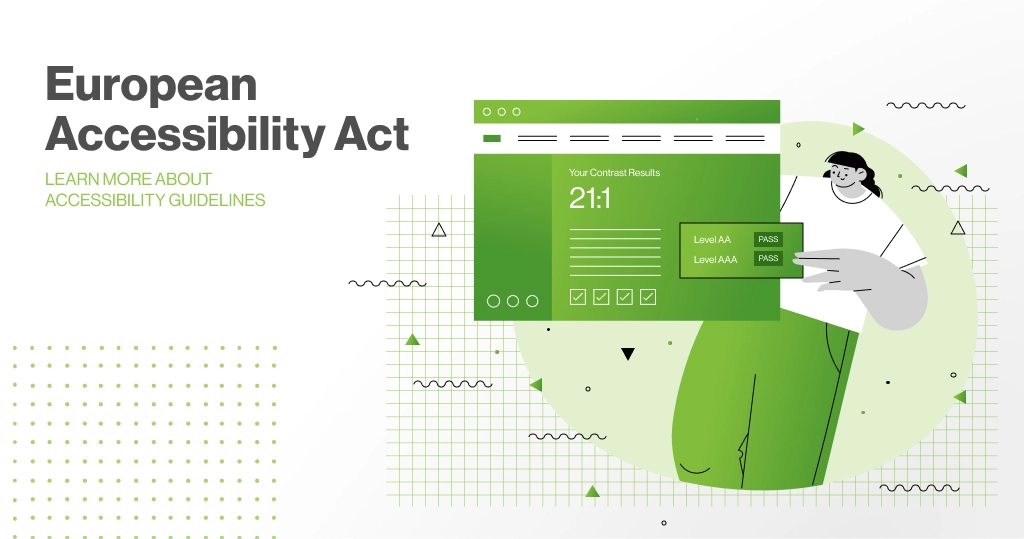The European Accessibility Act is a directive from the European Union, which seeks to improve the functioning of the internal market for accessible products and services by removing barriers created by divergent legislation. In essence, the goal of the act is to make certain key products and services more accessible to people with disabilities. Set to be effective from 28th June 2025, the ample lead time provided ensures that substantial adjustments can be made prior to its full enforcement throughout the EU.
- Enforcement Date: Takes effect on June 28, 2025, requiring businesses to comply with accessibility standards.
- Purpose: Aims to improve accessibility for people with disabilities across the EU, ensuring equal access to key products and services.
- Who It Affects: Applies to businesses providing digital and physical products/services, including e-commerce, banking, transport, and ICT (Information & Communication Technology).
- E-Commerce Compliance: Online stores must be accessible, including clear navigation, screen reader compatibility, and keyboard usability.
- Legal Consequences: Non-compliance may result in fines, restrictions, or legal action at the national level.
The European Accessibility Act fosters inclusivity for those facing accessibility challenges, especially persons with disabilities and the elderly. It addresses barriers they commonly face. As the European population ages, these provisions become even more significant, ensuring active participation in societal activities and enhancing their overall quality of life.
For businesses, the Act paves the way for accessing a broader market by catering to millions of EU citizens with disabilities. Standards across member states mean that businesses no longer need to adjust for country-specific regulations, leading to cost savings. Furthermore, the directive drives innovation, pushing companies to design universally appealing products, enhancing their brand image as socially responsible entities. Compliance not only reduces legal risks but also opens doors to new business models and collaborations centred on accessibility. In essence, the Act, while promoting inclusivity, also positions businesses strategically for growth and market leadership.
Businesses are mandated to ensure their products and services align with the Act’s accessibility standards. If they adhere to the European standards, they are automatically deemed compliant, streamlining the process. Each EU member state is entrusted with the directive’s enforcement, potentially involving penalties for any breach.
The directive requires transposition into the national legislation of each EU member state within a stipulated time frame. While the Act provides overarching rules, nuances might emerge in its implementation across countries due to local adaptations or interpretations.
For more information on the European Accessibility Act Click Here.



